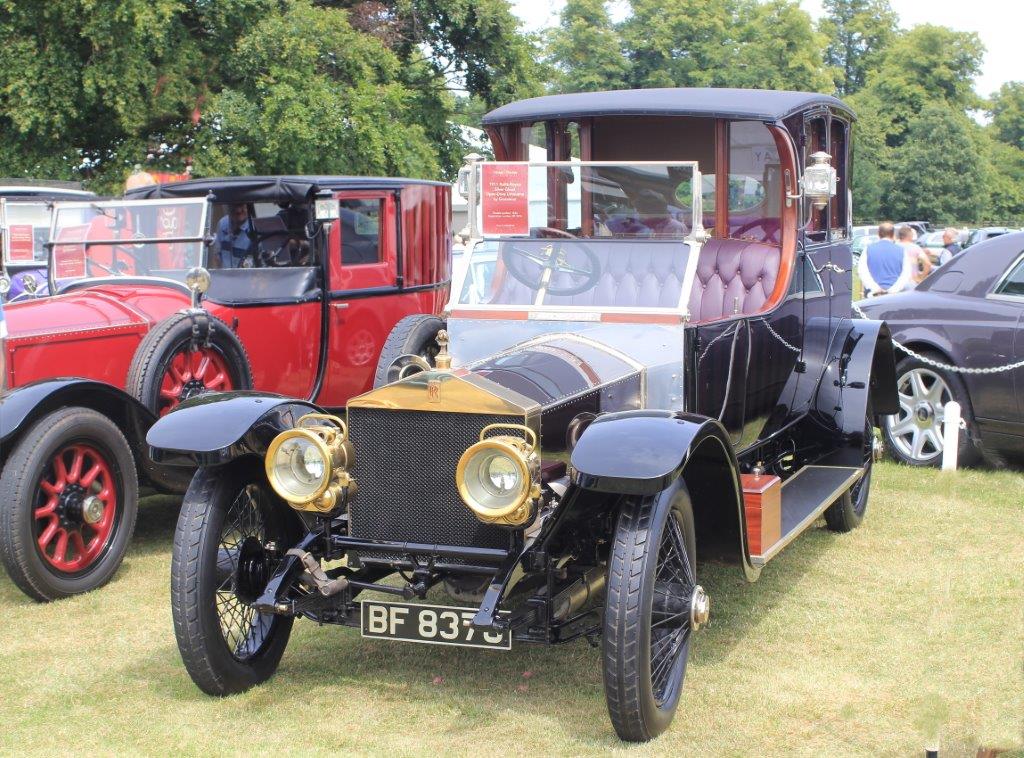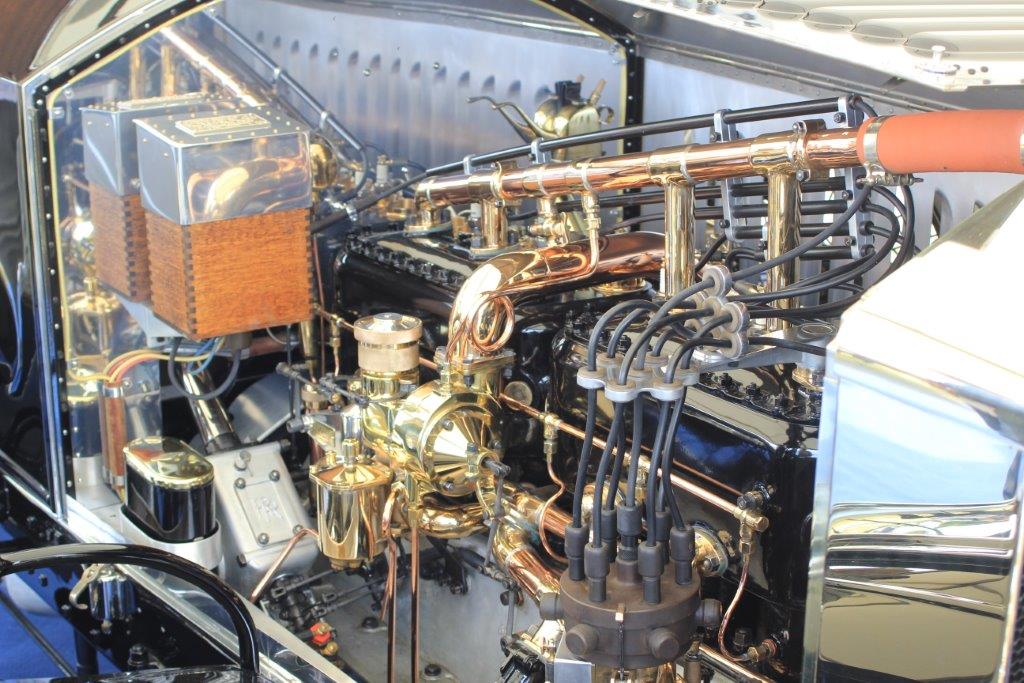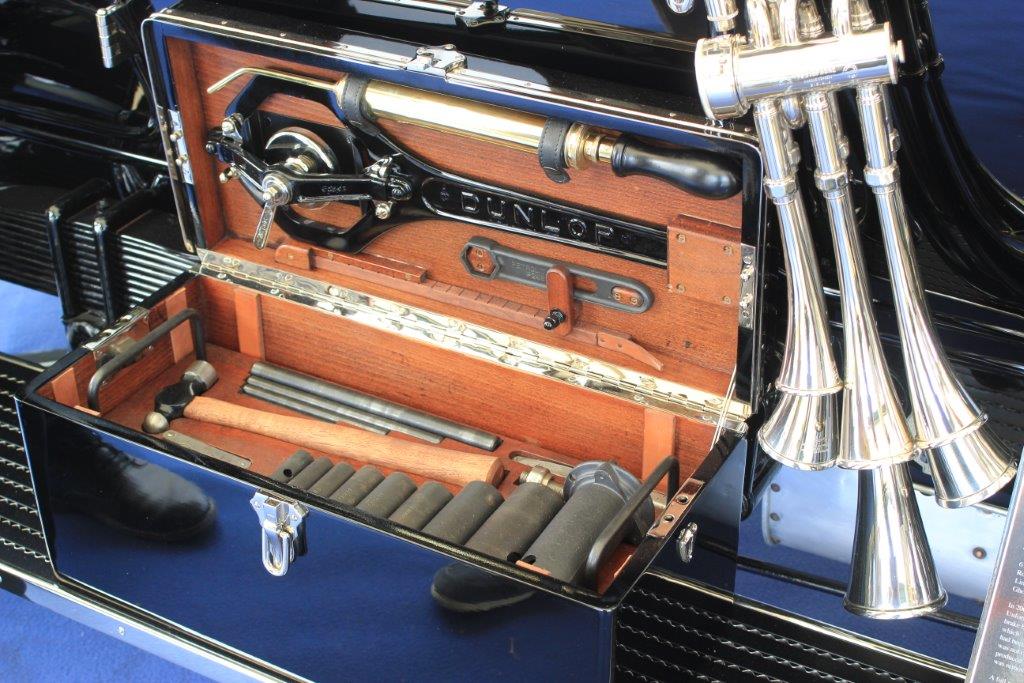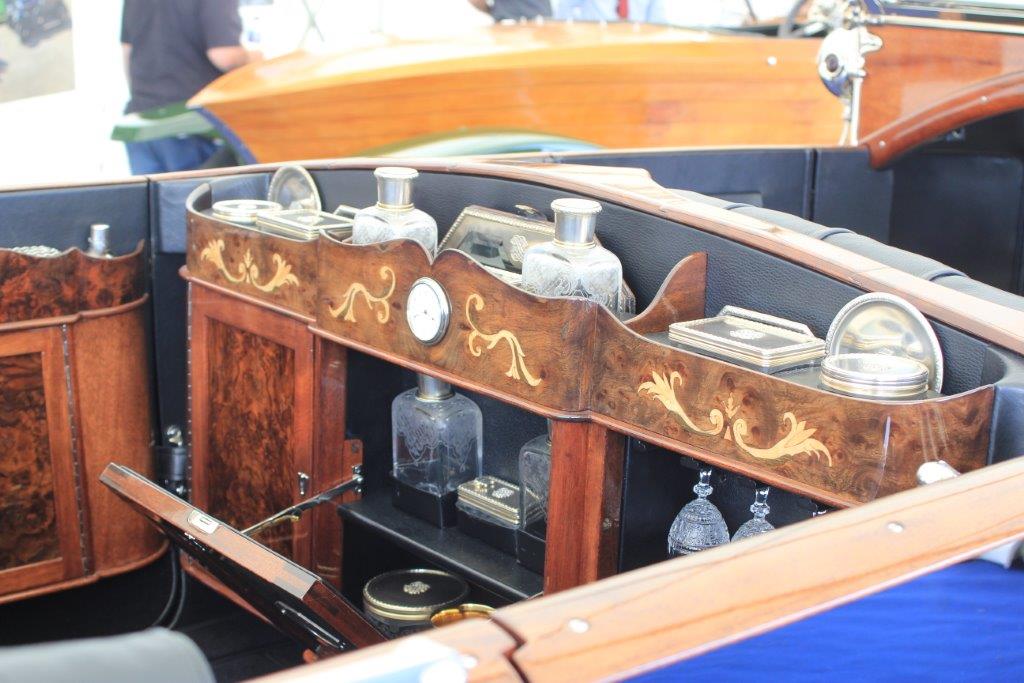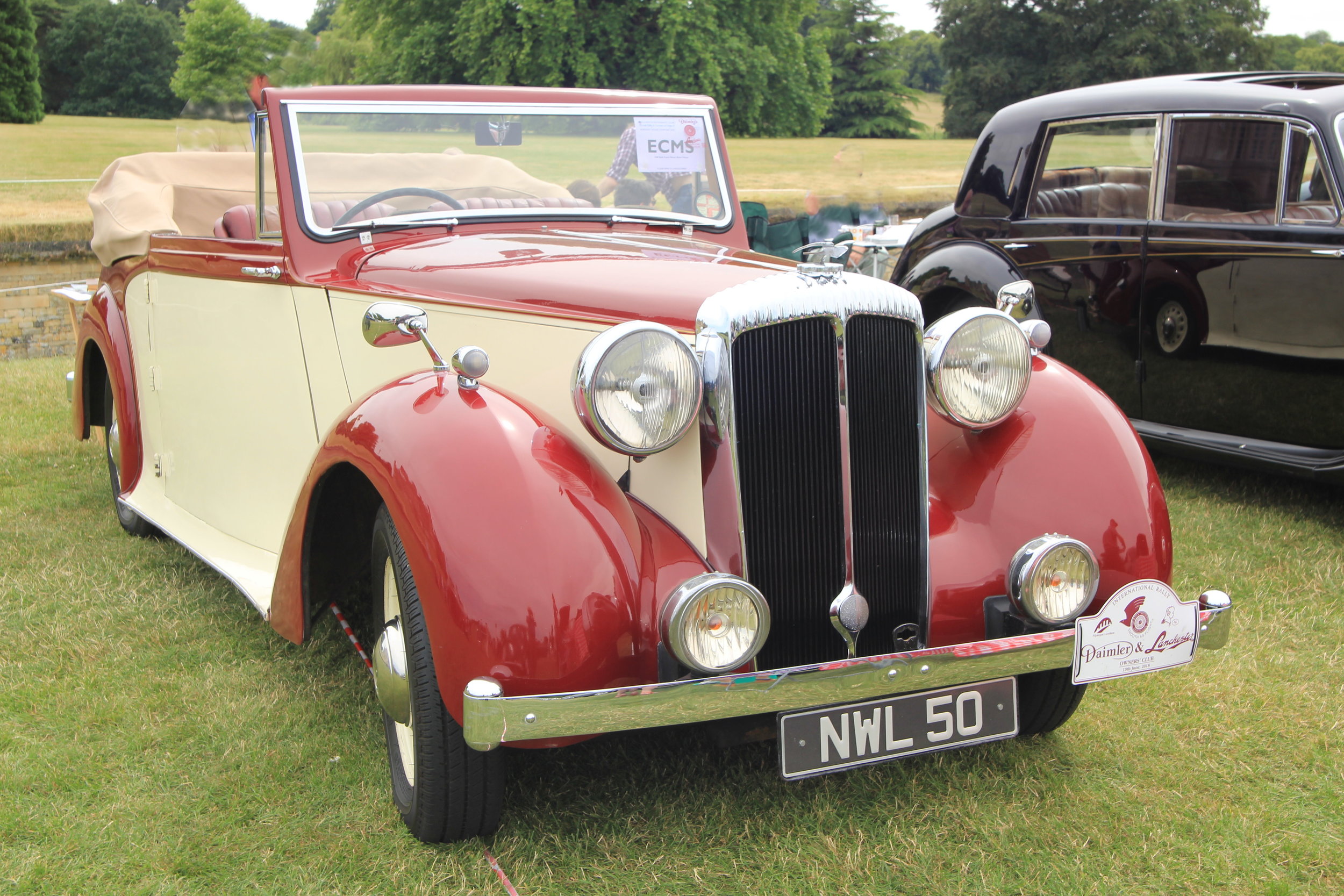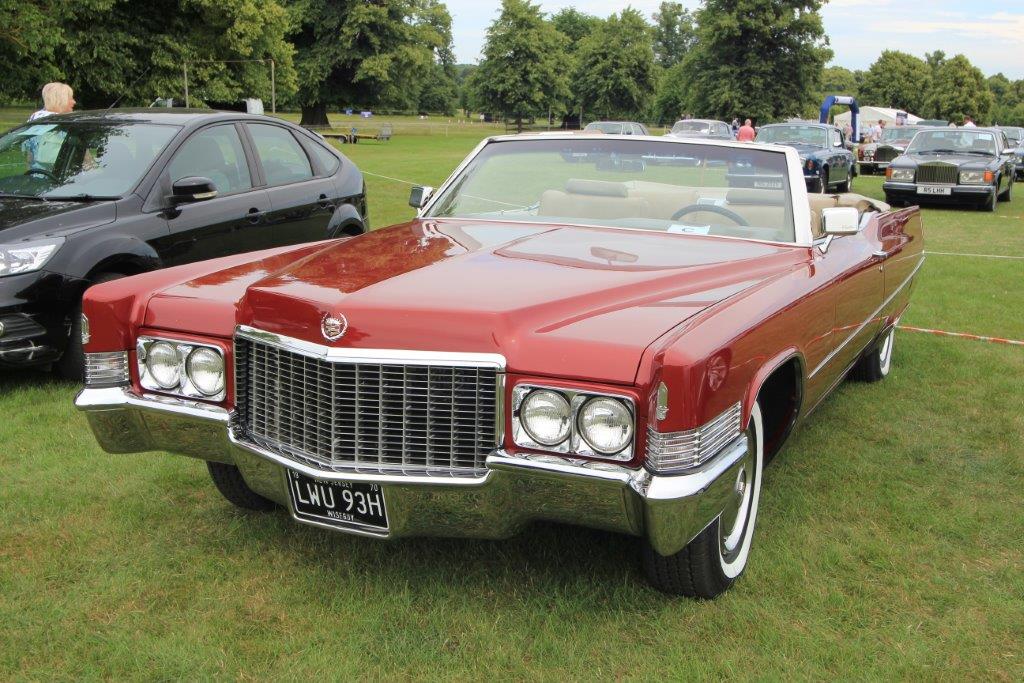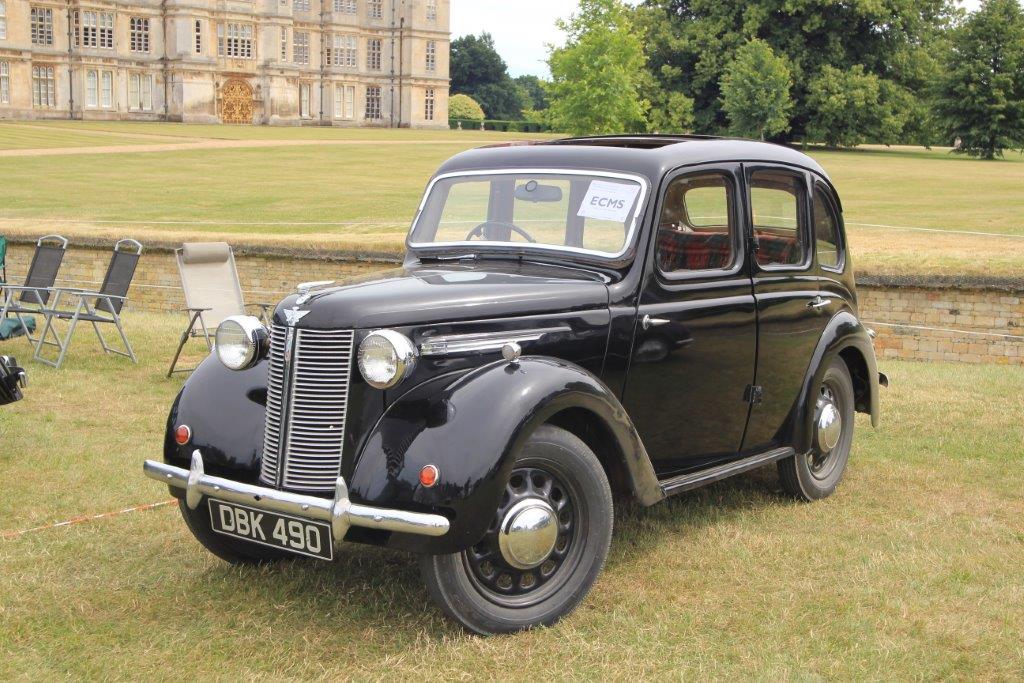Maybe a tithe or two of Her Majesty’s revenue was filched by Queen Elizabeth’s Lord High Treasurer. Besides being the Queen’s principal fixer he was building Burghley, round which Rolls-Royce Enthusiasts rallied.
William Cecil (1520-1598), first Lord Burghley was tasked with raising cash for the navy. The Queen needed all the Pounds, Sovereigns, Royals, Shillings and Pence she could get to fend off the Spanish Armada. She would probably have impressed the millions-worth of Rolls-Royces lavished across her fixer’s lawns and deer park into the Exchequer. The trade tents’ Silver Ghosts alone would have helped her navy see off the King of Spain. One auctioned by Holloways of Banbury (above 1912 Silver Ghost for sale, chassis number 44NA by Henri Labourdette with a rosewood ceiling. Ex 1913 Alpine Trial) was expected to go for £500,000. Others including the 1914 Kellner-bodied 67RB at Jonathan Wood’s would have made enough millions to buy the entire Armada.
Rolls-Royces and Bentleys exempt
Burghley was motoring gloriana. Euphonious as Gilbert and Sullivan, inseparable as Victoria and Albert, Rolls and Royce created a great brand name. Sir Frederick Henry Royce (1863-1933) workoholic, obsessive, sickly, pursued perfection. Ill from overwork making cranes he dismantled his Decauville, “...marred by careless workmanship”, and set about making something better. Brusque and rude he didn’t think much of WO Bentley. “I believe you’re a commercial man Mr Bentley,” he demanded. “Well not really,” WO replied. “Primarily I suppose I’m more a technical specialist.”
“You’re not an engineer then, are you?” WO never forgave him, remembering that they had both been railway engineers: “I think you were a boy in the Great Northern Railway running sheds at Peterborough before I was a premium apprentice at Doncaster.” Premium meant Bentley’s parents had paid for him to work there. Royce’s aunt had supported his apprenticeship until penury intervened.
The Honourable Charles Stewart Rolls (1877-1910) was an Edwardian gentleman to his elegant fingertips, complete with uniformed chauffeur and courtly manner but famously mean. Sir Thomas Sopwith described him as, “curiously unloveable.” An ardent balloonist and aerial adventurer Rolls’s lifestyle was expensive and the sales company set up with £6,500 from his father Lord Llangattock, needed a new line to bolster its trade in French cars.
The pair met on Wednesday 4 May 1904 at the Midland Hotel Manchester, produced “The Best Car in the World” and also an asset that turned out priceless - aero-engines. Rolls-Royce Enthusiasts at Burghley thrilled to a fly-past (below) by Battle of Britain Memorial Flight Lancaster, Hurricane and Spitfire propelled by magnificent Merlin enginess, Royce’s final Private Venture (PV) masterpiece. Merlins fought off another Armada.
CS Rolls thought he had little to learn from Royce, a northerner with a capacity for taking pains. Yet as he drove the experimental Royce out of the Midland Hotel's carriage court he realised that this two-cylinder was as smooth and quiet as a four-cylinder. He instructed partner Claude Johnson to take on the Royce car and negotiate exclusive rights. Johnson liked double-barrelled names so stipulated that they would be known as Rolls-Royces. Alas for Rolls, his flying exploits were his undoing. He gained the melancholy distinction of being the first pilot killed in a British air crash at Bournemouth on 12 July.
One of the first 40/50s was painted silver, called The Silver Ghost when cars, rather like ships, were individually named. The title stuck and they were produced for eighteen years.
(Above).. 1911 Silver Ghost Grosvenor Limousine at Vintage and Prestige. (Avove left) Engine of Kellner car at Jonathan Wood, its toolkit and audible warning of approach. Cocktails for rear seat passengers. 67RB was made in May 1914 with a 22in radiator and 4-speed gearbox. It was sent to Kellner in France for a torpedo phaeton 4-seat body with nickel fittings. Bought through the French Rolls Royce distributor by the Rugeroni family of Lisbon it was taken to Portugal just ahead of the German invasion and turned up in England in 2009 somewhat dilapidated. It had not done many miles but the Kellner coachwork was replaced by an undignified shooting brake. Some years later American Silver Ghost authority Steve Littin got in touch with the owner. He had discovered a later Ghost in Holland with incorrect bodywork that had also belonged to the Rugeronis. This had been converted with the original Kellner body from 67RB. Littin found that it fitted exactly to 67RB’s chassis. Reunited the car was restored to prise-winning Pebble Beach concours standard.
Imposters at Burghley: Made when royalty rode in Daimlers 1938-1950, Daimler DB18. “Easi-clean” wheels a bit infra dig. Rare drophead. Cadillac De Ville. Jaguar XK120. Austin 8 1939-1947 exemplified designer Dick Burzi’s Buick-inspired grille and bonnet line.




